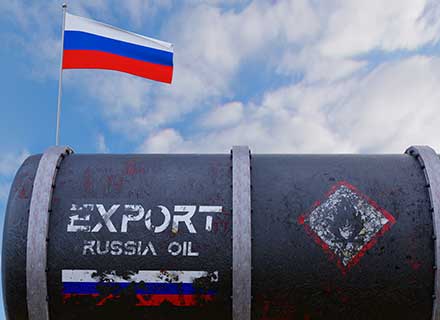Deputy Prime Minister Alexander Novak has recently informed President Vladimir Putin that Russia and its OPEC+ allies had agreed to reduce oil exports, and that the country will disclose the new key parameters soon.
The signal from Moscow suggests that both the stakeholders may prolong such voluntary cuts into October 2023. Russia, the second-largest oil exporter in the world, has been reducing output and exports in concert with Saudi Arabia in addition to current OPEC+ limits.
At a live-streamed cabinet meeting, Vladimir Putin questioned Alexander Novak, his point person for oil, on whether OPEC+ partners had approved a reduction in the supply of oil to global markets.
“We have agreed, but we will publicly announce the main parameters next week,” Alexander Novak replied.
Which parameters might be made public wasn’t immediately clear, and Alexander Novak’s office declined to make any further comments.
To support the market, the Organization of the Petroleum Exporting Countries (OPEC) and its allies, led by Russia, started restricting supplies in late 2022. In June, the production restraints were extended through 2024.
Separately, Russia announced that it would reduce oil exports by 300,000 bpd in September and 500,000 bpd in August, or around 5% of total output.
Alexander Novak also stated that it was too early to make a firm prediction, but Russia may continue the cutbacks into October.
Analysts predict that Saudi Arabia will likely extend its voluntary 1 million barrel per day oil production cut for a third straight month into October 2023.
The voluntary cut was extended by Riyadh from August till September, with the energy ministry indicating that it may be “extended, or extended and deepened.”
The greatest monthly gain in Brent oil prices since January 2022 occurred in July when prices rose 14% over the previous month. On Wednesday, the price has grown by almost 1% on the day to USD 86.7 per barrel.
Meanwhile, Russian seaborne crude exports fell for a second consecutive month in July 2023 to fall below 3 million b/d for the first time this year while oil product exports held steady as domestic refineries emerged from the maintenance season, tanker tracking data showed.
Russia-origin seaborne crude shipments averaged 2.96 million b/d in July, a 15% fall on the month to the lowest since December and almost 890,000 b/d below the post-war high of 3.85 million b/d seen in May, stated S&P Global Commodities at Sea data. The latest export fall has put July’s total slightly below average pre-war levels of 3.1 million b/d.
Almost all the fall in Russian crude exports was seen to China where tanker shipments shrank by over 400,000 b/d, the S&P data stated further. Shipments to India, currently Russia’s biggest oil buyer, were little changed at 1.56 million b/d, while ship-to-ship transfers off Greece almost dried up in July.
“Overall, Russian crude transferred at sea in July slumped by 6.64 million barrels to 4 million barrels in July, the smallest STS volumes since November 2022. The crude export fall follows a surge in May when Indian refiners snapped up record volumes of discounted Russian crude. India refiners — which buy mostly Urals crude — saw imports of Russian crude soar to 1.9 million b/d in May,” S&P stated further.


